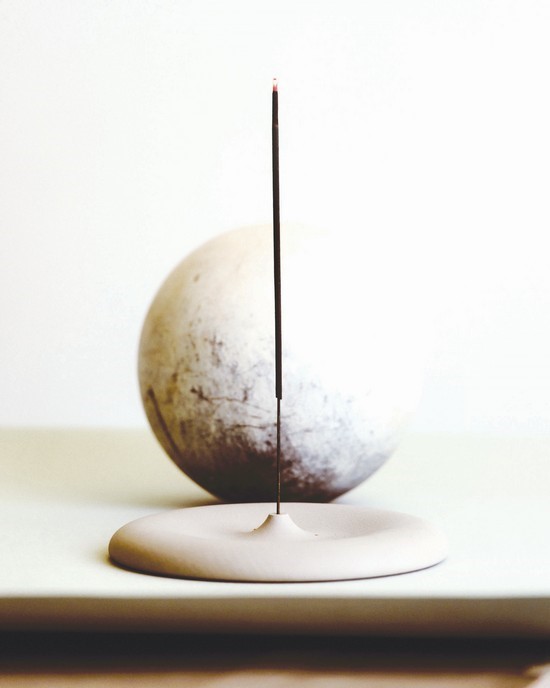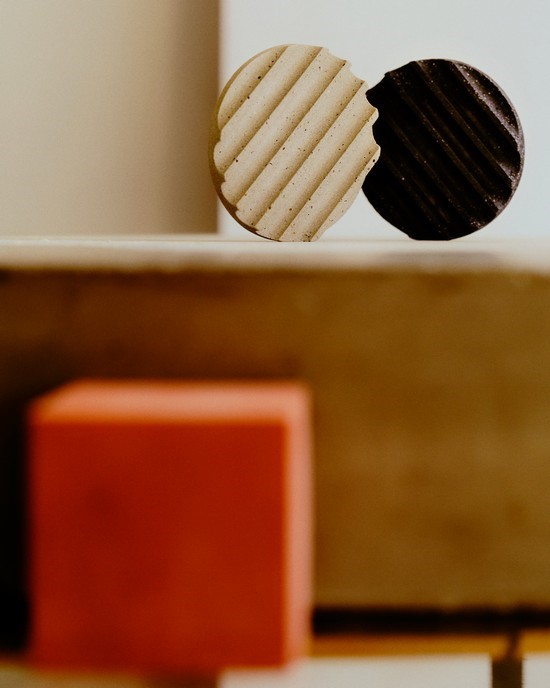Toward the end of 2019,
Natalie Feltham started to look
for a simple, minimal vessel for burning incense in her home.
اضافة اعلان
She wanted something more austere than the clay or ceramic
options she had seen, with “clean, symmetrical and sharp lines.” But it “didn’t
really exist,” she said. So, Feltham, 27, who lives in Hitchin, England,
decided to make her own using concrete.
Acquiring the necessary materials wasn’t that difficult, she
said. Making concrete calls for just three ingredients: cement, water, and
aggregates, which are small particles of sand, gravel, or stone. Cement is
mixed with water to form a paste, which is combined with the aggregates and
poured into a mold. As it hardens, the mixture becomes concrete.
“It’s quite an easy medium to mix and make,” said Feltham, who
had noticed concrete being used to create countertops and tiles, but “not
really in small home pieces.”
 (Photo: NYTimes)
(Photo: NYTimes)
After finishing the incense burner, Feltham began using the
material to make other décor and, in early 2020, started selling pieces via her
line,
Concrete Goods. Her boyfriend, James Goodwin Davies, 30, left his job as
a graphic designer later that year to become the co-owner of Concrete Goods,
which now sells candle holders, bowls, plates, soap dishes and, of course,
incense burners that the two make using the material.
Their products are among a number of home furnishings made with
concrete, which is creeping into categories more commonly associated with
ceramics. On
Etsy, there was a 49 percent increase in searches for concrete or
cement trays on the site in the past 12 months compared to the same period the
previous year, as well as a 25 percent increase in searches for concrete or
cement décor, according to Dayna Isom Johnson, a trend expert for Etsy.
“I do think it’s working its way into that ceramics space a
little bit,” said William Losleben, an artist and craftsman in Sultan,
Washington. “Stuff that was once made from clay or terracotta could be made out
of concrete fairly easily.”
While Losleben uses the material to make furniture including end
tables, desks, and chairs for his line Concrete Project, he also sells trays,
bowls, and even boxes made with concrete.
 (Photo: NYTimes)
(Photo: NYTimes)
Emma McDowall, 28, an artist in Edinburgh, Scotland, who uses
concrete to create candle holders, vases, and other pieces for her line
Studio Emma, said the material has an unpredictable quality that can be appealing to
both artisans and consumers, because subtle changes to the process of making
something with concrete can change a finished piece.
Adding more water can lead to cracked finishes, the way it’s mixed
can result in more (or fewer) visible air bubbles, and the type of aggregate
used can affect texture and tone.
“You wouldn’t get that with a ceramic piece,” McDowall said.
Joe Mitchell, 35, a land surveyor in Holmfirth,
England, said
the incense burner he bought from Concrete Goods in 2020 “started his love
affair” with the material, and that he has since acquired other concrete décor,
including trays and even a dining table that features it.
“Concrete can be smooth as glass, or rough and tactile,” said
Mitchell, who noted this range of textures is part of what attracts him to the
material.
Candace Molatore, 26, a marketing specialist who lives in
Portland, Oregon, said she started buying concrete vases and other vessels
during lockdown. She was drawn to the material by its muted tone, which she
said helps make spaces “feel airy, bright, and light,” and look more like those
in Scandinavian homes.
Concrete dates back thousands of years. One the earliest
remnants of the material, thought to be from 5600 B.C., was discovered in the
mid-1960s along the Danube River in Serbia and was made of sand, gravel, water
and limestone, according to the book “History of Concrete: A Very Old and
Modern Material” by Per Jahren and Tongbo Sui One.
 (Photo: NYTimes)
(Photo: NYTimes)
The authors write that much of the concrete used today is
created using Portland cement, which Joseph Aspdin, a bricklayer from Leeds,
England, received a patent for in the 19th century. It is typically made in a
kiln using limestone, clay and other minerals.
Kate Balsis, 37, creative director and co-owner of Concrete
Collaborative, an architectural finishing company in San Marcos, California,
said concrete’s evolution from an industrial material to one used to make décor
coincides with a growing “interest in architecture and design happening for the
average person that wasn’t there 10 years ago.”
“I don’t know if it’s Instagram or something else, but everyone
has much more of an interest in it,” said Balsis, whose company in 2017 started
a sister brand, Concrete Love, that sells concrete jewelry, bowls, planters and
other small goods.
She believes that interest in the material also comes from an
increased desire to connect with objects placed in a home. “People really want
a story behind the product,” Balsis said.
Concrete offers that because pieces made from it are often
created by hand in small batches, while the process of making porcelain or
other ceramics can be “really automated,” said Mario Guagnelli, 52, a
co-founder of IntoConcrete, which sells products made with the material by
artisans around the world.
Because of this, it’s often the case that no two concrete
products are exactly the same.
“There’s something about concrete that is very particular, and
we’ve learned through the years that it’s hard to mass produce,” Guagnelli
said.
Read more Culture and Arts



